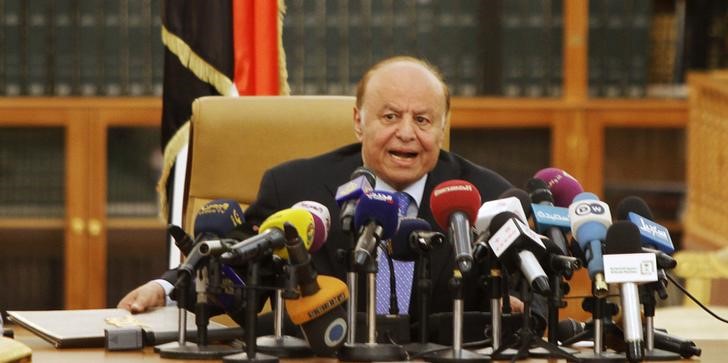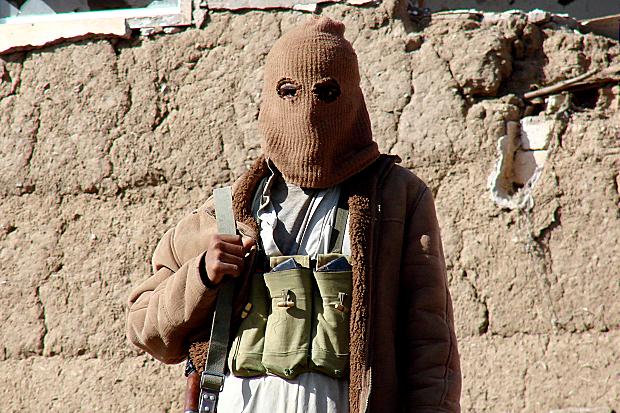
Shiite rebels holding Yemen’s embattled president captive in his own home reached a deal Wednesday night to end a violent confrontation in the capital. However, even with the deal, many questions remain about who is actually in charge of this country targeted in a U.S. drone-strike campaign against al-Qaida fighters.
Here are some questions and answers regarding Yemen, the Arab world’s poorest country beset by political chaos and violence, and how it affects the great war against its local al-Qaida franchise, which has claimed several failed attacks in America and the assault on the satirical French newspaper Charlie Hebdo.
Q: WHAT DOES THIS MEAN FOR AL-QAIDA IN YEMEN AND THE U.S. CAMPAIGN AGAINST IT?
A: Al-Qaida in the Arabian Peninsula, which Washington considers to be the group’s most dangerous branch, has been thriving in the fallout of the Houthis’ offensive across central Yemen, where Sunni tribesmen predominate. The turmoil has taken a sharply sectarian tone, pitting Sunnis against Shiites, to the benefit of Sunni al-Qaida. The militant group claims to be present in 16 out of Yemen’s 21 provinces. A weakened Hadi leaves the U.S. without a faithful partner amid its drone-strike and counter-terrorism campaign.
Q: WHO ARE THE HOUTHIS?
A: The Houthi movement started as a small religious group called “The Believing Youth,” who sought to revive Zaydism, a Shiite sect to which some 30 percent of Yemenis, mainly in the north, belong. After the 2003 U.S.-led invasion of Iraq, Hussein al-Houthi capitalized on anger over the war to launch an armed revolt against the U.S.-allied president at the time, autocrat Ali Abdullah Saleh. The war ended in a 2010 cease-fire. Houthis also enjoy wide support among disenchanted tribesmen who had suffered from Saleh’s military campaigns.
Q: WHAT IS THE HOUTHIS’ GOAL AND HOW MUCH OF YEMEN DO THEY HOLD?

A: After Saleh’s 2012 ouster following Arab Spring protests, the Houthis’ power grew. In September, the Houthis— also known as Ansar Allah — seized the capital, Sanaa, after besieging it for weeks under the pretext that they wanted a new government and the reinstatement of fuel subsidies. Since then, the Houthis have overrun at least eight out of 21 provinces, including Hodeida, which has the country’s second-largest port. Late Wednesday, they agreed to withdraw from the president’s home and other areas in exchange for promises of greater representation in the country’s government.
Q: ARE THE HOUTHIS ALIGNED WITH IRAN?
A: Critics say the Houthis are heavily backed by Iran. Yemeni authorities have seized ships carrying Iranian weapons allegedly destined for the Houthis in recent years. The Houthis deny that they are linked to Iran. The U.S. and Saudi Arabia back Hadi. The Saudis view the Houthis as both an Iranian proxy and a terrorist organization. Riyadh fears the group will create a mini-state in northern Yemen, which borders Saudi Arabia.
Q: WILL YEMEN SPLIT?
A: Yemen only unified in 1990. Most Yemenis want a federal system that would grant more power to local authorities. Both the Houthis and many in the once-independent south would like to reconstitute some version of a north-south divide, while Hadi and his supporters want a six-region scheme, as put forth in the draft constitution. The Houthis reject that and the deal made Wednesday night had no mention of the six-region plan.
The deal
The agreement between the rebels and the president promised to give the Shiite rebel Houthi movement more say in the affairs of the Arab world’s poorest country in exchange for the group removing its fighters from President Abed Rabbo Mansour Hadi’s home, the SABA news agency said.
However, the late-night deal left unanswered who really controls the country and how much power is still held by Hadi, a key ally in U.S. efforts to battle Yemen’s local al-Qaida branch.
In the deal, the Houthis also agreed to release a top aide to Hadi that they had kidnapped in recent days.
SABA said the agreement included a clause that would answer the rebels’ demands to amend the constitution and expand their representation in the parliament and in state institutions. It also included promises to ensure better representation for Yemen’s southerners as well, the deal said.
The agreement also calls on Hadi to shake up a commission tasked with writing a draft constitution to ensure bigger representation for the Houthis.
The draft constitution has proposed a federation of six regions, something the Houthis reject. The agreement reached Wednesday night also ensures that Yemen would be a federal state, but doesn’t mention the six region proposal, saying controversial issues will be further discussed.
The agreement, while addressing the immediate Houthi takeover and security concerns in the capital, leaves the contentious political issues unresolved.
The Houthis, who took control of the capital in September, say they only want an equal share of power, while critics say that they prefer presence of Hadi as a symbolic leader while they keep a grip on power. Critics also say the Houthis are backed by Shiite power Iran, something they deny.
The increasingly weakened leadership and power vacuum are setting stage for al-Qaida in Yemen, which claimed the recent attack on the French satirical newspaper Charlie Hebdo and failed assaults on the U.S. homeland, to grow more powerful in the chaos.
Aides to Hadi said earlier Wednesday that he was “captive” in his home. Soon after the agreement Wednesday night, there was no visible change in Houthi deployment outside Hadi’s house.
NY Times/AP
Leave a Reply
You must be logged in to post a comment.